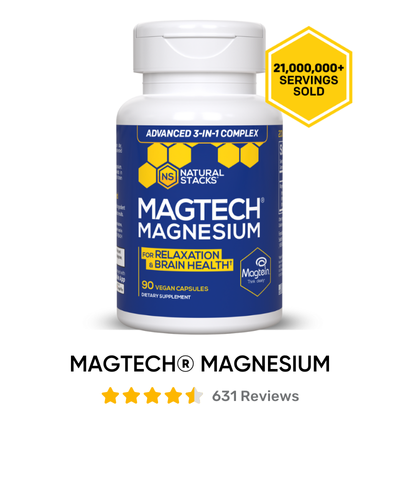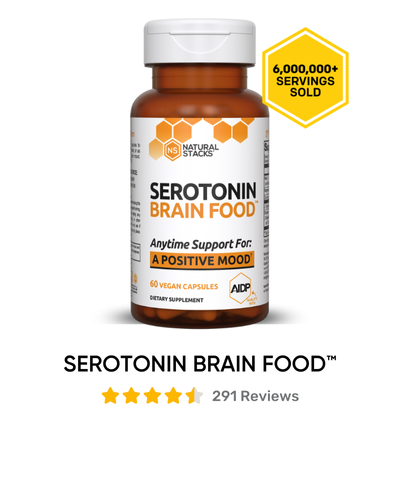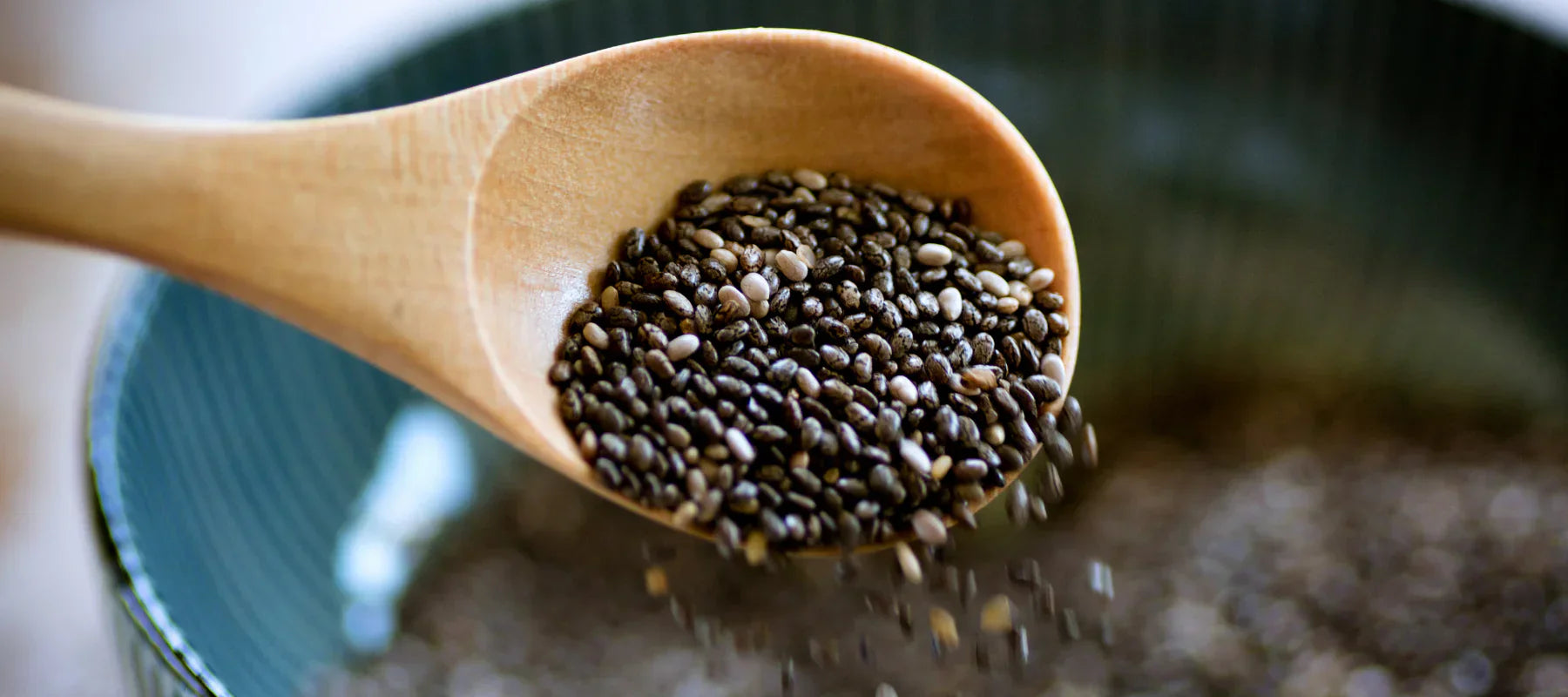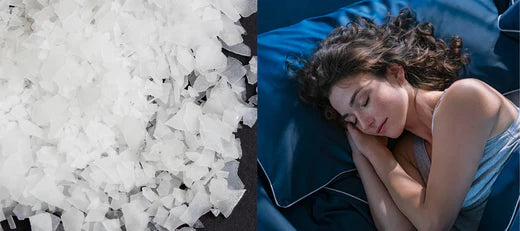Dopamine Metabolism for Optimal Performance
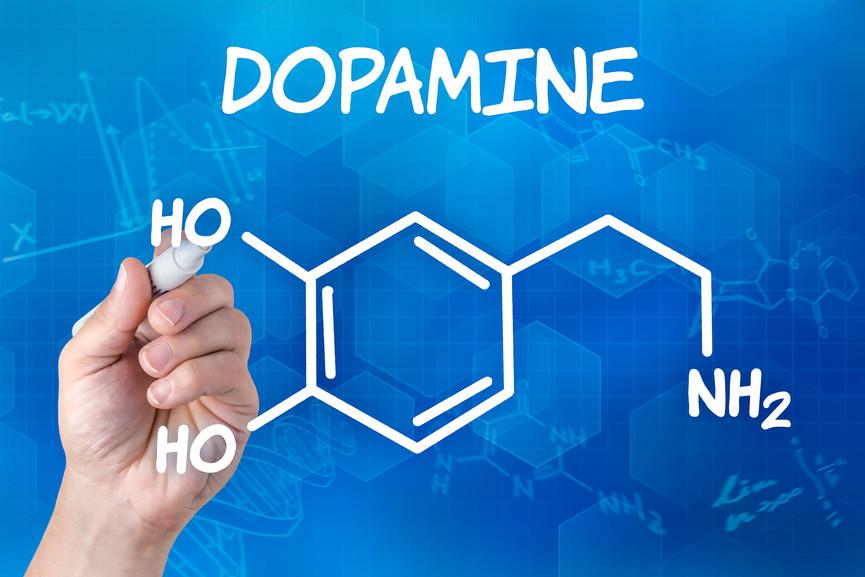

Dopamine is a neurotransmitter that is, among other things, associated with motivation, short-term memory, creativity and personality [1][2][3]. It is metabolized into epinephrine and norepinephrine to increase alertness and attention [4].
It must be properly balanced and metabolized for optimal benefit. Too much dopamine can result in manic states [5] and too little can cause depression and lack of motivation [6].
Dopamine metabolism can be metaphorically compared to a factory process where raw materials such as L-Phenylalanine and L-Tyrosine, which are amino acids present in foods, are transformed by various workers (enzymes) who use various materials (cofactors) in each transformation step.
The intermediate products of this metabolism are used to transmit signals through the body and the brain [7]. Some are stored for later usage and some are actually harmful if they build up too much.
After many different transformation steps they are transformed to chemicals such as homovanillic acid which are excreted in the urine. Unlike a regular factory, the intermediate products are the useful aspects of production and are used primarily in signaling.
At the beginning of dopamine metabolism the dietary amino acid L-phenylalanine is converted into L-tyrosine by phenylalanine hydroxylase and L-tyrosine into L-dopa by tyrosine hydroxylase. Studies suggest that tyrosine hydroxylase is upregulated by phosphorylated CREB which is activated during cAMP/PKA driven long-term potentiation [8].
This is one of the theorized mechanisms of action of CILTEP. Tyrosine hydroxylase can also be upregulated by nicotine for up to 48 hours [9]. The cofactors of these reactions are iron and tetrahydrobiopterin [10].
Iron is available as a supplement but is not something I’d take as it can easily over accumulate and lead to toxicity [11]. I prefer to upregulate tyrosine hydroxylase activity, as its activity is the rate limiting step in this metabolic process [12].
Further down the metabolic chain from L-Tyrosine is L-Dopa, which is also available as a drug and in the supplement mucuna pruriens [13]. I don’t recommend it because of L-dopa’s association with tardive dyskinesia when taken long-term by parkinson's sufferers [14]. However, there is a study that suggests that mucuna pruriens might helps prevent some types of tardive dyskinesia [15]. L-dopa’s synthesis into dopamine is supported by the active form of vitamin B6, known as pyridoxal phosphate, commonly abbreviated as p5p , and the enzyme dopa-decarboxylase [16].
Some intermediate products of dopamine metabolism act as an agonist at the TAAR1 receptor [17]. This receptor is primarily targeted by ADHD drugs [18]. It causes increases in cAMP levels in the cell [19]. Forskolin also raise cAMP levels but through a different mechanism.
Unlike forskolin, the aforementioned ADHD drugs cause efflux of stored dopamine into the synaptic cleft via modulation of the dopamine transporter protein known as DAT [20][21]. This efflux leads to increases in dopamine in the synaptic cleft producing fast increases in arousal.
It’s my opinion, from reading through a lot of anecdotal experiences and research, that it might be undesirable to rapidly raise neurotransmitter levels in the synaptic cleft above a given baseline as it can lead to excessive arousal and unbalanced cognitive effects.
In my opinion, it’s better to help the “factory” produce optimally by supplying co-factors and optimally helping and directing each intermediate reaction and post-synaptic metabolic pathways.
Another place that products in dopamine metabolism operate is in the dopamine receptors themselves. The D1,D2,D3,D4, and D5 receptors all respond to dopamine in the brain and have various cognitive related effects. D2 receptors modulate prolactin [22] which some studies suggest is linked to the male sexual refractory time [23].
Direct agonists for these receptors are usually in the class of dopamine agonist drugs that are sometimes prescribed for parkinson's symptoms [24][25][26]. D1 and D2 are involved in novelty detection [27] and sexual desire [28]. While D1 and D5 are involved in memory formation [29]. D2 and D3 are associated with addiction [30] and compulsions [31]. D4 is involved with cognitive performance [32].
The various mood, addiction, compulsion and sexual influencing effects of dopamine agonists in the brain and various accounts of socially undesirable behavior under the administration of direct dopamine agonists [33], usually in parkinsons treatment, leads me to avoid the direct stimulation of these pathways. Again, it is my humble opinion that it is better to provide cofactors to aid and assist in metabolism along dopaminergic pathways than to directly activate receptors with agonists. However, direct agonists certainly have their uses.
Dopamine is converted into norepinephrine with vitamin C (ascorbic acid) as a cofactor via the enzyme dopamine b-hydroxylase. That is further converted to epinephrine via phenylethanolamine n-methyltransferasewith SAM-e as a cofactor. You can read more about SAM-e in my earlier essay “The SAM Cycle And The Brain”. Dopamine can also be converted to the TAAR1 agonist 3-Methoxytyramine via the enzyme COMT [34].
COMT inhibition is an interesting area of exploration in cognitive enhancement. There is a gene polymorphism, the val158met polymorphism, that influences the rate at which dopamine is processed into further metabolic intermediates via the COMT enzyme. The quick processing polymorphism is called val/val and the more slowly processing polymorphism is called met/met.
In one study, participants with the val/val gene had lower scores on a memory test known as dual-n-back [35]. Another study suggests that those with the met158 allele have better cognitive performance.
To quote the study “The low activity met158 allele has been associated with improved working memory, executive functioning, and attentional control, but also with a higher risk of anxiety-related behaviors” [36]. It is interesting to note that Luteolin is a substrate for COMT [37] so variations in the COMT allele might account for different anecdotal effects of Luteolin from artichoke extract.
MAO inhibitors might be helpful for brain health by possibly preventing the degradation of dopamine into DOPAL via MAO, which, if it builds up, can cause oxidative damage if it is not detoxified into DOPAC [38].
Selegiline, which is a primarily MAO-B inhibiting drug is also known to extend lifespan in animals, possibly by protecting the dopamine producing regions of the brain [39]. Catechin and epicatechin present in green tea and chocolate also have MAO-B inhibition activity [40][41][42].
How we metabolize dopamine is a core contributor to mood and cognitive function. The reason studying it is so fascinating is that dopamine is. as some studies have suggested, responsible for fascination itself [43].
In fact the more one delves into the interaction between dopamine and cognition, the more one wonders if moods and personality and life itself is a biochemical construction or if there is room for free will. Regardless, I prefer to have my dopamine metabolism well stocked and modulated so I have the motivation and energy to do whatever I focus my mind on and to help prevent the over accumulation of harmful metabolic byproduct.
Additional posts by Abelard Lindsay (@ciltep):
- The Nootropic Why
- Acetyl-L-Carnitine Exploring Its Cognitive and LTP Related Effects
- Magnesium L-Threonate Can Improve Brain Function and LTP
- CILTEP and Racetams: Evidence for a theory of complementary mechanisms of action
- Some Health Benefits of Resveratrol Could Theoretically Apply to CILTEP
- Assembling the Acetylcholine Puzzle Part 1
[expand title="References:"]
- Depue RA, Collins PF. Neurobiology of the structure of personality: dopamine, facilitation of incentive motivation, and extraversion. Behav Brain Sci. 1999;22(3):491-517.PMID 11301519
- Lhommée E, Batir A, Quesada JL, et al. Dopamine and the biology of creativity: lessons from Parkinson's disease. Front Neurol. 2014;5:55. PMID 24795692
- Ellis KA, Nathan PJ. The pharmacology of human working memory. Int J Neuropsychopharmacol. 2001;4(3):299-313. PMID 11602036
- Lapiz MD, Morilak DA. Noradrenergic modulation of cognitive function in rat medial prefrontal cortex as measured by attentional set shifting capability. Neuroscience. 2006;137(3):1039-49.PMID 16298081
- Maier F, Merkl J, Ellereit AL, et al. Hypomania and mania related to dopamine replacement therapy in Parkinson's disease. Parkinsonism Relat Disord. 2014;20(4):421-7. PMID 24467817
- Pizzagalli DA. Depression, stress, and anhedonia: toward a synthesis and integrated model. Annu Rev Clin Psychol. 2014;10:393-423. PMID 24471371
- Slominski A, Zmijewski MA, Pawelek J. L-tyrosine and L-dihydroxyphenylalanine as hormone-like regulators of melanocyte functions. Pigment Cell Melanoma Res. 2012;25(1):14-27. PMID 21834848
- Piech-dumas KM, Tank AW. CREB mediates the cAMP-responsiveness of the tyrosine hydroxylase gene: use of an antisense RNA strategy to produce CREB-deficient PC12 cell lines. Brain Res Mol Brain Res. 1999;70(2):219-30. PMID 10407170
- Bobrovskaya L, Gilligan C, Bolster EK, Flaherty JJ, Dickson PW, Dunkley PR. Sustained phosphorylation of tyrosine hydroxylase at serine 40: a novel mechanism for maintenance of catecholamine synthesis. J Neurochem. 2007;100(2):479-89. PMID 17064352
- Homma D, Katoh S, Tokuoka H, Ichinose H. The role of tetrahydrobiopterin and catecholamines in the developmental regulation of tyrosine hydroxylase level in the brain. J Neurochem. 2013;126(1):70-81. PMID 23647001
- Liu D, He H, Yin D, et al. Mechanism of chronic dietary iron overload-induced liver damage in mice. Mol Med Rep. 2013;7(4):1173-9. PMID 23404080
- Rao F, Zhang L, Wessel J, et al. Tyrosine hydroxylase, the rate-limiting enzyme in catecholamine biosynthesis: discovery of common human genetic variants governing transcription, autonomic activity, and blood pressure in vivo. Circulation. 2007;116(9):993-1006. PMID 17698732
- Raina AP, Khatri R. Quantitative Determination of L-DOPA in Seeds of Mucuna Pruriens Germplasm by High Performance Thin Layer Chromatography. Indian J Pharm Sci. 2011;73(4):459-62. PMID 22707835
- Guigoni C, Aubert I, Li Q, et al. Pathogenesis of levodopa-induced dyskinesia: focus on D1 and D3 dopamine receptors. Parkinsonism Relat Disord. 2005;11 Suppl 1:S25-9. PMID 15885624
- Pathan AA, Mohan M, Kasture AS, Kasture SB. Mucuna pruriens attenuates haloperidol-induced orofacial dyskinesia in rats. Nat Prod Res. 2011;25(8):764-71. PMID 20635303
- Cellini B, Montioli R, Oppici E, Voltattorni CB. Biochemical and computational approaches to improve the clinical treatment of dopa decarboxylase-related diseases: an overview. Open Biochem J. 2012;6:131-8. PMID 23264832
- Bunzow JR, Sonders MS, Arttamangkul S, et al. Amphetamine, 3,4-methylenedioxymethamphetamine, lysergic acid diethylamide, and metabolites of the catecholamine neurotransmitters are agonists of a rat trace amine receptor. Mol Pharmacol. 2001;60(6):1181-8. PMID 11723224
- Miller GM. The emerging role of trace amine-associated receptor 1 in the functional regulation of monoamine transporters and dopaminergic activity. J Neurochem. 2011;116(2):164-76. PMID 21073468
- Xie Z, Miller GM. Trace amine-associated receptor 1 as a monoaminergic modulator in brain. Biochem Pharmacol. 2009;78(9):1095-104. PMID 19482011
- Xie Z, Miller GM. Trace amine-associated receptor 1 is a modulator of the dopamine transporter. J Pharmacol Exp Ther. 2007;321(1):128-36. PMID 17234899
- Lute BJ, Khoshbouei H, Saunders C, et al. PI3K signaling supports amphetamine-induced dopamine efflux. Biochem Biophys Res Commun. 2008;372(4):656-61. PMID 18510945
- Burris TP, Stringer LC, Freeman ME. Pharmacologic evidence that a D2 receptor subtype mediates dopaminergic stimulation of prolactin secretion from the anterior pituitary gland. Neuroendocrinology. 1991;54(2):175-83. PMID 1685014
- Haake P, Exton MS, Haverkamp J, et al. Absence of orgasm-induced prolactin secretion in a healthy multi-orgasmic male subject. Int J Impot Res. 2002;14(2):133-5. PMID 11979330
- Coldwell MC, Boyfield I, Brown T, Hagan JJ, Middlemiss DN. Comparison of the functional potencies of ropinirole and other dopamine receptor agonists at human D2(long), D3 and D4.4 receptors expressed in Chinese hamster ovary cells. Br J Pharmacol. 1999;127(7):1696-702. PMID 10455328
- Poewe W, Rascol O, Barone P, et al. Extended-release pramipexole in early Parkinson disease: a 33-week randomized controlled trial. Neurology. 2011;77(8):759-66. PMID 21832218
- Breuer ME, Groenink L, Oosting RS, et al. Antidepressant effects of pramipexole, a dopamine D3/D2 receptor agonist, and 7-OH-DPAT, a dopamine D3 receptor agonist, in olfactory bulbectomized rats. Eur J Pharmacol. 2009;616(1-3):134-40. PMID 19549514
- Rangel-gomez M, Hickey C, Van amelsvoort T, Bet P, Meeter M. The detection of novelty relies on dopaminergic signaling: evidence from apomorphine's impact on the novelty N2. PLoS ONE. 2013;8(6):e66469. 23840482
- Giuliano F, Allard J. Dopamine and sexual function. Int J Impot Res. 2001;13 Suppl 3:S18-28. PMID 11477488
- De bundel D, Femenía T, Dupont CM, et al. Hippocampal and prefrontal dopamine D1/5 receptor involvement in the memory-enhancing effect of reboxetine. Int J Neuropsychopharmacol. 2013;16(9):2041-51. PMID 23672849
- Boileau I, Payer D, Chugani B, et al. The D2/3 dopamine receptor in pathological gambling: a positron emission tomography study with [11C]-(+)-propyl-hexahydro-naphtho-oxazin and [11C]raclopride. Addiction. 2013;108(5):953-63. PMID 23167711
- Sim HR, Choi TY, Lee HJ, et al. Role of dopamine D2 receptors in plasticity of stress-induced addictive behaviours. Nat Commun. 2013;4:1579. 23481387
- Woolley ML, Waters KA, Reavill C, et al. Selective dopamine D4 receptor agonist (A-412997) improves cognitive performance and stimulates motor activity without influencing reward-related behaviour in rat. Behav Pharmacol. 2008;19(8):765-76. 19020411
- Maier F, Merkl J, Ellereit AL, et al. Hypomania and mania related to dopamine replacement therapy in Parkinson's disease. Parkinsonism Relat Disord. 2014;20(4):421-7. PMID 24467817
- Sotnikova TD, Beaulieu JM, Espinoza S, et al. The dopamine metabolite 3-methoxytyramine is a neuromodulator. PLoS ONE. 2010;5(10):e13452. PMID 20976142
- Goldberg TE, Egan MF, Gscheidle T, et al. Executive subprocesses in working memory: relationship to catechol-O-methyltransferase Val158Met genotype and schizophrenia. Arch Gen Psychiatry. 2003;60(9):889-96. PMID 12963670
- Heinz A, Smolka MN. The effects of catechol O-methyltransferase genotype on brain activation elicited by affective stimuli and cognitive tasks. Rev Neurosci. 2006;17(3):359-67. PMID 16878403
- Chen Z, Chen M, Pan H, et al. Role of catechol-O-methyltransferase in the disposition of luteolin in rats. Drug Metab Dispos. 2011;39(4):667-74. PMID 21209248
- Fitzmaurice AG, Rhodes SL, Lulla A, et al. Aldehyde dehydrogenase inhibition as a pathogenic mechanism in Parkinson disease. Proc Natl Acad Sci USA. 2013;110(2):636-41. PMID 23267077
- Stoll S, Hafner U, Pohl O, Müller WE. Age-related memory decline and longevity under treatment with selegiline. Life Sci. 1994;55(25-26):2155-63. PMID 7997074
- Hou WC, Lin RD, Chen CT, Lee MH. Monoamine oxidase B (MAO-B) inhibition by active principles from Uncaria rhynchophylla. J Ethnopharmacol. 2005;100(1-2):216-20. PMID 15890481
- Lin SM, Wang SW, Ho SC, Tang YL. Protective effect of green tea (-)-epigallocatechin-3-gallate against the monoamine oxidase B enzyme activity increase in adult rat brains. Nutrition. 2010;26(11-12):1195-200. PMID 20472400
- Subagio A, Sari P, Morita N. Simultaneous determination of (+)-catechin and (-)-epicatechin in cacao and its products by high-performance liquid chromatography with electrochemical detection. Phytochem Anal. 2001;12(4):271-6. PMID 11705334
- Fernandez HH, Friedman JH. Punding on L-dopa. Mov Disord. 1999;14(5):836-8. 10495047 [/expand]


